
All categories
Featured selections
Trade Assurance
Buyer Central
Help Center
Get the app
Become a supplier

(3382 products available)
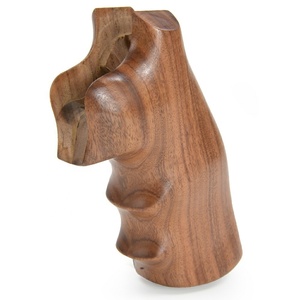
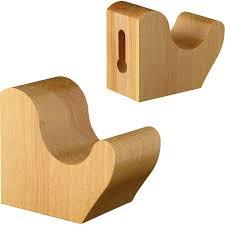




























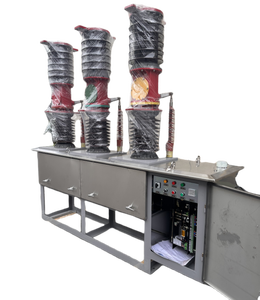





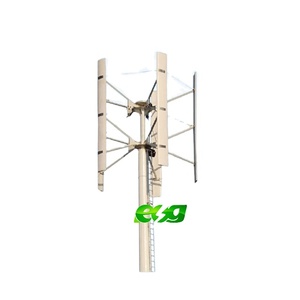


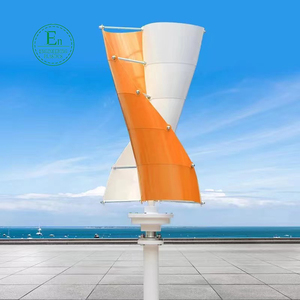
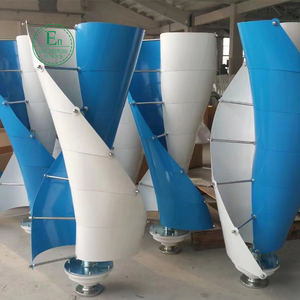
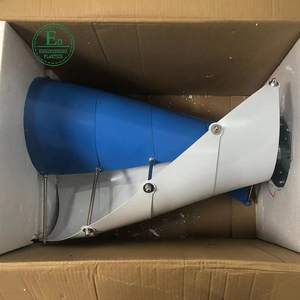


The wind turbines' parts types of variation are based on the turbine model and generator type.
Horizontal-Axis Wind Turbine (HAWT)
The most common type of wind turbine is fitted with blades that rotate horizontally. These have two or three blades, and the angle can be modified to enhance wind capture. The generator is situated at the top of the tower. This predominately used style of turbine is found in large-scale commercial wind farms.
Vertical-Axis Wind Turbine (VAWT)
Unlike the VAWT, which has blades in a horizontal axis, there are two common forms of these turbines: the Darrieus and Savonius models, and the Darrieus turbines are eggbeater-shaped and capture winds from any direction. Savonius turbines are simpler, consisting of a bucket shape to capture less wind but more suited for low-speed generation. These are ideal for urban areas or offshore platforms where the wind direction fluctuates often.
Grid-Connected Turbines
Turbines designed to work with the main power grid are used in large commercial wind farms. Power generated is fed directly into the electrical grid. These are the most common types for utility-scale projects. A remote or isolated location not connected to electrical infrastructure uses grid-connected wind turbines.
Off-Grid Turbines
Smaller-scale turbines are intended for homes, boats, or remote monitoring systems not linked to power lines. Batteries are often combined with these systems to store electricity for times without wind. Though still connected to a mechanical drive, not using electrical generators is a wind-pump or other non-electric powered system.
Variable-Speed Generators
Generators on these turbines can adjust their operating speed to maintain consistent power output, even as wind speed varies greatly. This technology allows more efficient energy capture over a broader wind speed range.
Permanent Magnet Generators (PMG)
The key to these generators is permanent magnets instead of electromagnets in traditional generators. These small and efficient wind turbines need less maintenance and can produce electricity at lower wind speeds.
Ignores Standard
IEC standards include safety regulations and performance testing for wind turbines and manufacturers and installers worldwide. Following these standards ensures reliability, quality, and uniform safety across areas with diverse regulations. Wind energy system design, installation, and maintenance use these standards as a guideline to mitigate potential risks and improve operational competence.
Clean, Renewable Energy Generation
The energy provided by wind turbines is naturally renewable and does not create carbon emissions, distinguishing it from fossil fuels. It is harnessed using horizontal or vertical axis turbines, which convert kinetic wind energy into rotational mechanical energy. This mechanical energy spins various generative components that convert the energy to electrical form.
Cost Savings
Non-renewable fuels are cheaper to utilize on an operating basis, but wind power offers longer-term savings. Wind energy doesn't require fuel purchases; once the turbines are installed, the costs for operation and maintenance are much lower than traditional energy sources.
Remote Area/No Power Grid
Wind turbines provide an electrical solution for remote fields, islands, or rural communities lacking electrical infrastructure. With on-site energy generation, these areas don't need expensive grid installation or rely on diesel generators.
Integration with Other Systems
Alongside solar panels or in backup configurations, wind turbines contribute to energy independence and security. In hybrid systems, wind and solar power are both harnessed and stored in battery banks for later use, providing continuous electricity even without grid power.
Pumping Applications
Wind turbines connected to pumps are used for irrigation, drinking water supply, and livestock watering in agriculture, mining, and remote communities. Wind-powered pumps draw groundwater or surface water for essential water supply.
Environmental Monitoring and Remote Sensors
Wind turbines systematically power weather stations, research buoys, and remote sensing equipment in oceanography, ecology, and geophysics studies in hard-to-reach areas. By not needing electrical outlets, they enable scientists to install long-term monitoring of environmental data collection.
Turbine Manufacturing
Wind power relies on metal mining, including steel for turbine towers, rare earth elements used in permanent magnets, and other materials like fiberglass or carbon composites for blade construction. Treating the metal and composite materials to build the turbines is a complex process involving smelting and weaving fibers.
Job Creation
Wind energy investments create over 100,000 direct jobs in turbine manufacturing, installation, operation, and maintenance, plus thousands of indirect jobs in areas like transportation and supply chain. Wind power brings employment opportunities to rural locations where the wind farms are sited.
Blades
Usually made of composite materials like fiberglass and carbon fiber-reinforced polymer to provide flexibility and strength and be lightweight but with high durability. Longer blades capture more wind, generating greater power. Efficient aerodynamic shape reduces drag while increasing lift for better wind energy capture.
Tower
Towers are constructed from steel, welded with high tensile strength for structural support, resisting winds and gravity. It's a tubular or lattice design providing height and stability, with a minimum of 80 feet off the ground. Galvanized or painted steel prevents the tower from being exposed to environmental corrosion.
Generator
There are various types of generators like PMA or induction; these convert kinetic energy from spinning blades into electrical energy. Permanent magnets generate power efficiently at lower wind speeds. Induction generators are simple and efficient. Sometimes snakes or other animals are a generator component injury risk. These are often housed in a generator cover.
Inverter
An inverter conditioned direct current, which is produced by certain wind turbine generators, and converted it to alternating current for compatibility with the electrical grid. Grid-synchronous inverters match the grid phase for smooth power integration. Power optimizers maximize energy capture per panel by managing output at the panel level.
Tail
A tail on a VAWT or HAWT orient wind vanes allow the turbine to face the wind direction for optimal capture. It's an adjustable, lightweight, aerodynamic, and fabricated promoting proper alignment. The tail is typically made out of thin sheet metals or aluminum composites.
Site Selection:
Select a location with consistent, unobstructed wind speeds ideal for harnessing wind energy. Use a compact, level area with easy access for construction equipment and maintenance. Choose a spot far from power lines, homes, and trees.
Foundation:
Build a deep concrete or gravel foundation to secure the wind turbine and prevent tipping. The foundation diameter should be 6-8 inches thick and form a sturdy base for the heavy tower. Allow it to cure and harden for several days before continuing.
Tower Installation:
The turbine and other components were installed after erecting the tower. The team installed the blades, tail, frame, and generator.
Electrical Connections:
Link wires from the turbine to an inverter using a connection box. This stirred alternating current. Secure the box protected from the elements and moisture. Connect to a battery bank or power grid for energy usage.
Testing:
Once all elements are connected and installed, ensure the wind turbine works correctly. Check electrical outputs, spinning, mechanical components, and stabilization. Ensure safety precautions are followed during testing and before use.
Regular inspections:
Visually inspect the wind turbine daily to identify any damage, unusual noises, or structural problems. Monthly or seasonally, conduct a detailed inspection by a technician to assess components like blades, tower, and tail. Drive one or a few mobile units to inspect hard-to-reach areas or test using drones. Perform periodic lubrication and cleaning.
Lubrication:
Lubricate bearings, moving parts, and gears regularly as recommended by the manufacturer. Use quality grease or oil appropriate for environmental temperature conditions. Ensure seals are intact to prevent lubricant leakage.
Electrical system maintenance:
Check wiring, inverters, and connections for wear or exposure to moisture quarterly. An electrician should replace damaged electrical components. Ensure the connection box is dry and clean throughout the year.
Monitor performance:
Keep track of wind speed and power output routinely. Compare real-time data to normal range values to quickly identify performance problems. Use software to analyze turbine efficiency based on historical weather data and collected statistics.
Professional servicing:
Hire certified technicians at recommended intervals, typically annually, to evaluate major mechanical elements like the tail and drive systems. Experts use special tools and safety methods to perform intricate maintenance work from heights. Refer the wind farm owner manual where needed.
Wind turbine parts are manufactured with premium metals, like galvanized steel for frames, aircraft aluminum for rotating elements, and coils created with copper wire. Some blades are fashioned from carbon fiber-reinforced polymers, offering strength and flexibility. These parts endure rigors of extreme winds, rain, snow, and temperature differences.
Safety Deadly lightning strikes, extreme hail, severe thermal differences, and powerful cyclone winds threaten turbines. All parts must survive lightning, winds over 150 mph, temperature changes from 40 below to over 100, hail up to 4 inches, tornadoes and cyclones, and high heat. Maintenance crews face risks of elevated falls, electrical shocks, brutal storms, and getting entangled in machinery.
Emergency systems:
Turbines include brakes that can stop a spinning rotor even in hurricane-strength winds. Inverters prevent power surges, wiring has fuses, and many other emergency fail-safe features. Safety cages and gurus offer lower fall risks, while shock-absorbing harnesses reduce fall impacts.
Protective measures:
Extremely powered lightning rods on turbines direct lightning strikes safely down into the ground. Turbines shut down if winds reach 55 mph, offering safety during storms. Monitoring devices check weather alerts, and shelters inside turn downwind farm workers during storms. Lockout/tagout procedures enforce maintenance work without power activation, preventing electrical accidents. Sturdy materials like stainless steel ensure wet, windy, and stormy day turbine activity.
A1: Rotor blades, towers, generators, and inverters are key wind turbine components that help convert wind energy into electricity.
A2: Blades are typically made from reinforced polymers, which are lightweight, strong, and flexible, offering an aerodynamic shape for efficient wind capture.
A3: Maintenance involves regular visual and technical inspections, lubrication of mechanical components, electrical system checks, and testing performance.
A4: Yes, there are risks like electrical shocks and falls. Safety measures include using harnesses, helmets, and proper scaffolding to minimize fall risks.
A5: International Electrotechnical Commission (IEC) standards guide safety, testing, and installation for wind turbine components.